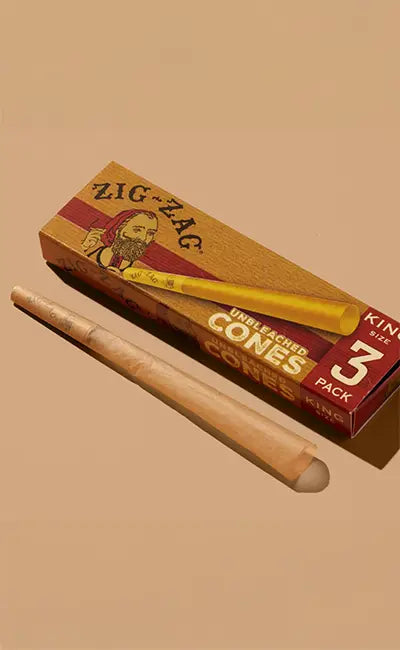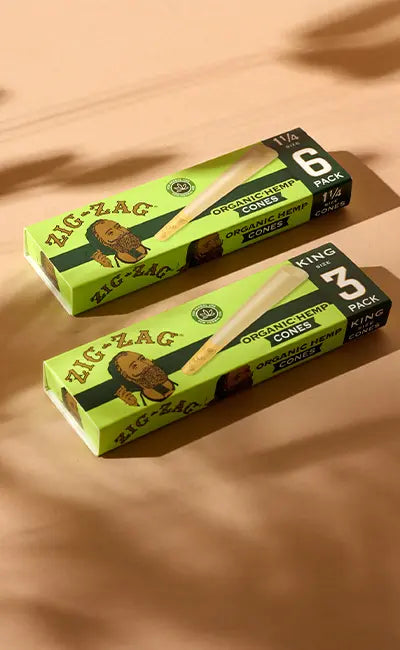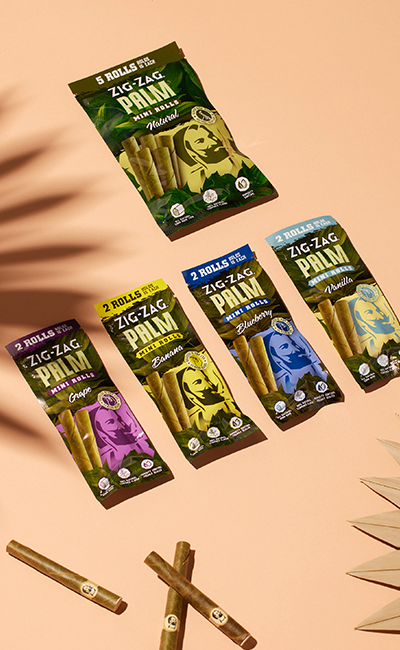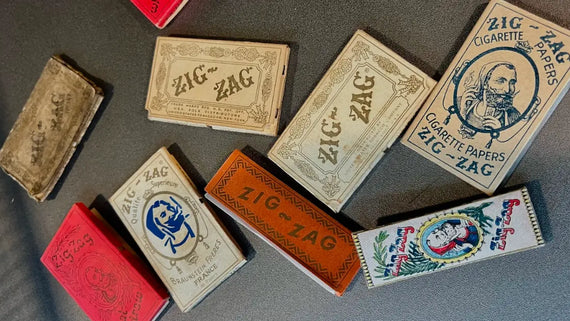The journey of rolling papers history is as fascinating as it is long. These indispensable accessories for smokers have roots stretching back centuries. Initially, rolling papers were a luxury, accessible only to the affluent. They evolved from rudimentary materials to the refined products we know today. Understanding the early history of smoking papers provides insight into how cultural and technological changes have shaped their development. This journey through time highlights the adaptability and innovation in the world of smoking.
The Early Days: Ancient Materials and Practices
In the early stages of
rolling paper development, the materials used were vastly different from what we see today. The very first rolling papers were made from simple materials such as corn husks, rice paper, and other plant-based products. These were fundamental, often homemade, and varied greatly in quality and consistency. The choice of these materials was largely influenced by availability and local customs. This initial phase laid the groundwork for the more sophisticated manufacturing techniques that would follow.
Ancient Traditions and Practices in Smoking
Each region had its unique method and preferred materials, reflecting local customs and resources. For instance, in some cultures, thin strips of palm leaves or other plant materials were used. These early practices of rolling and smoking were often associated with rituals and social gatherings, highlighting the communal aspect of smoking that has persisted through the ages.
Transition from Traditional to Commercial Rolling Papers
This change was driven by industrialization and the rise of global trade in the 18th and 19th centuries. It allowed for the standardization of rolling papers and introduced new materials like wood pulp and flax. This era saw the birth of the rolling paper industry as we know it today, with brands beginning to emerge and mass production becoming possible.
Early Materials in Rolling Paper Development
These materials set the benchmarks for quality, burn rate, and flavor, which are still considered today. They also paved the way for experimentation with different materials, leading to innovations that continually improved the smoking experience. Understanding the significance of these early materials offers valuable insights into how and why rolling papers have evolved in the ways they have.
Milestones in Rolling Paper Development
Introduction of Rice, Hemp, and Flax Papers
The evolution of rolling papers underwent a significant transformation with the introduction of rice, hemp, and flax as materials. Each of these materials brought distinct qualities to rolling papers, catering to the different preferences and needs of smokers. Let's delve into the unique characteristics of each type:
-
Rice Papers: Pioneering a shift in the rolling paper market, rice papers are celebrated for their exceptional thinness and slow-burning properties. Crafted with minimal processing, these papers are composed primarily of rice and water, which means they contain fewer chemicals and impurities. This results in a cleaner taste and a purer smoking experience, as the thinness of the paper minimizes interference with the natural flavors of the tobacco or herbs. Their slow-burning nature is not only a practical feature, saving material and prolonging the smoking session, but it also appeals to those who wish to enjoy a leisurely smoke, making each session last longer.
-
Hemp Papers: Hemp rolling papers are derived from the hemp plant, a highly sustainable crop that grows quickly and requires minimal pesticides. These papers are robust and resistant to tearing, making them user-friendly, especially for beginners. Typically unbleached, hemp papers avoid the use of harsh chemicals, offering a healthier alternative to traditional papers. The ecological and health benefits make hemp papers particularly attractive to environmentally conscious smokers who prioritize sustainability in their smoking products. Moreover, the natural texture and slight thickness of hemp papers provide a tactile pleasure that enhances the manual aspect of rolling.
-
Flax Papers: Flax papers are an excellent choice for smokers who value both strength and subtlety in their rolling papers. Combining the best features of rice and hemp papers, flax papers are both thin and strong. This combination allows for a smooth, even burn, which is crucial for a consistent smoking experience without interruptions. Flax, like hemp, is an environmentally friendly crop, making flax paper another sustainable option for eco-conscious consumers. The versatility of flax papers makes them suitable for a wide range of smokers, from those who appreciate the delicate nature of rice papers to those who require the durability of hemp.
The introduction of rice, hemp, and flax materials has diversified the options available in rolling papers. Each material caters to specific preferences, whether it be in terms of health or smoking quality. Understanding these differences can help smokers
choose the rolling paper that best fits their individual needs and preferences.
Key Innovations and Their Impact
The period following the introduction of rice, hemp, and flax papers saw several key innovations that further revolutionized rolling paper materials. Advancements in processing techniques allowed for finer, more consistent papers. The introduction of flavored and colored papers broadened the appeal of smoking, transforming it from a mere habit to a personalized experience. Additionally, the development of papers with natural gum lines simplified the rolling process, making it more accessible to a wider audience.
The Shift to Mass Production
This change allowed for greater consistency in quality and availability, making rolling papers more accessible than ever before. The industrialization of papermaking led to the standardization of sizes and thicknesses, catering to a broader range of preferences and smoking styles. Mass production also enabled manufacturers to experiment with different materials and technologies.
Cultural Influences
Cultural influences have played a significant role in the evolution of smoking papers. Different regions developed preferences for certain types of papers, influenced by local customs, smoking habits, and available materials. For example, hemp papers were particularly popular in regions where hemp was readily available and culturally significant. The exchange of cultural practices and materials used in rolling papers through global trade further diversified the
types of rolling papers available, reflecting a rich tapestry of global smoking traditions.
The Resurgence and Evolution of Hemp Papers
The Historical Context of Hemp in Rolling Papers
The history of
hemp smoking papers is as rich as it is complex. Initially popular due to its widespread availability and ease of processing, hemp fell out of favor in many parts of the world during the 20th century due to regulatory changes. However, recent years have seen a resurgence in the use of hemp papers. This revival is closely tied to the growing acknowledgment of hemp's environmental benefits.
Environmental and Health Benefits of Hemp Papers
Hemp papers have risen to prominence in the world of smoking accessories, largely due to their environmental and health benefits. These benefits not only contribute to a more sustainable world but also offer a healthier choice for consumers. Below is a detailed look at the various advantages of using hemp papers:
-
Sustainability: Hemp paper stands out for its sustainability. Hemp plants are known for their fast growth rate, requiring significantly less water and pesticides compared to traditional crops like cotton or trees. This efficiency not only makes hemp a low-impact crop but also supports more sustainable farming practices. The ability to grow quickly and under various conditions makes hemp a versatile and environmentally friendly resource for paper production, helping to conserve more vulnerable and slow-growing forest resources.
-
Biodegradability: Hemp papers are fully biodegradable, which contrasts sharply with the persistent waste problem posed by some synthetic materials. When disposed of, hemp papers naturally decompose, leaving behind no harmful residues. This property ensures that hemp papers contribute positively to waste management efforts and do not add to the growing concerns over pollution and landfill use. For environmentally conscious consumers, the biodegradability of hemp papers is a crucial factor, aligning with the desire to reduce personal and collective ecological footprints.
-
Reduced Chemical Usage: Manufacturing hemp papers typically involves fewer chemicals than are used in the production of traditional rolling papers. This minimal chemical usage results in a cleaner product that’s not only better for the environment but also healthier for users. By avoiding the incorporation of harsh chemicals, hemp papers offer a safer smoking option, reducing the risk of inhaling potentially hazardous substances. This feature is particularly important for smokers who are conscious of their health and seek to minimize their exposure to toxic materials.
-
Healthier Smoking Experience: Hemp papers promote a healthier smoking experience by omitting additives and chemicals commonly found in other rolling papers. This absence of artificial components means that smokers are less likely to inhale unwanted chemical byproducts during use, leading to a purer and potentially less harmful experience. Many users report a noticeable difference in taste and smoothness when using hemp papers, attributing this to the natural composition of the material.
-
Carbon Footprint: The cultivation of hemp positively impacts the environment through its carbon sequestration capabilities. As hemp plants grow, they absorb carbon dioxide from the atmosphere, which helps to reduce the presence of greenhouse gases. This natural process of carbon capture enhances the environmental benefits of hemp, making it an effective tool in efforts to combat climate change. By choosing hemp papers, consumers support agricultural practices that are not only sustainable but also beneficial in the broader context of global carbon reduction.
They stand out not just for their quality but also for their positive environmental and health impacts. These benefits align with the growing global emphasis on environmental responsibility and personal health, making
hemp papers a preferred choice for eco-conscious and health-aware consumers.
Diverse Types of Rolling Papers and Cultural Shifts
Variety of Papers Reflecting Technological Advancements
The array of smoking paper types available today is a direct result of technological advancements in paper manufacturing. Innovations have led to the creation of ultra-thin, flavored, and even transparent papers, each offering a unique smoking experience. This diversity caters to the varied preferences and needs of smokers around the world. For example, ultra-thin papers provide a purer taste and slower burn, while flavored papers add an extra dimension to the smoking experience.
How Cultural Shifts Influenced Rolling Paper Types
Changes in social attitudes towards smoking, environmental concerns, and health awareness have all played a role. For instance, the rise in health consciousness has led to an increased demand for organic and chemical-free papers. As mentioned previously, environmental awareness has boosted the popularity of sustainable materials like hemp. These cultural trends have shaped the market, leading to a broader and more specialized range of rolling papers.
The Role of Smoking Papers in Social and Cultural Practices
In many cultures, the act of rolling and smoking is a communal activity, bringing people together and fostering social connections. The choice of rolling paper can be a personal statement or a reflection of cultural identity. In some communities, traditional handmade papers are still preferred, holding cultural significance and heritage value. This aspect of rolling papers illustrates their role not just as a smoking accessory but as a part of cultural and social rituals.
Evolution of Rolling Papers in Different Cultures
Across the globe, the choice of rolling paper materials and the methods used in their manufacture often reflect deep-rooted cultural traditions as well as contemporary trends and technological advancements. In many Western cultures, there is a noticeable shift toward thinner, finer rolling papers. These papers are engineered to burn more cleanly and evenly, aligning with a growing preference for a more refined smoking experience. This trend is driven in part by advancements in material science that allow for the production of ultra-thin yet strong papers, reducing the paper's impact on the taste and quality of the smoke. The adoption of these modern, high-tech papers in the West is indicative of a broader cultural shift towards products that enhance purity and user experience, mirroring broader environmental and health-consciousness trends.
In various other regions of the world, particularly in parts of Asia and Africa, traditional, thicker rolling papers are still widely favored. These papers are often handmade using age-old techniques passed down through generations, emphasizing durability and a robust smoking session. In these communities, smoking is not just about the intake of tobacco or herbs but is also a cultural ritual, deeply integrated into social and ceremonial activities. The preference for thicker papers here can be attributed to their ability to hold more material, which is ideal for communal smoking sessions that are a common practice in these cultures.
Innovations in Rolling Paper Manufacturing
Technological Breakthroughs in Paper Manufacturing
Advances in paper milling, treatment processes, and material sourcing have led to higher-quality products with enhanced characteristics. These innovations include the development of papers that offer a more transparent smoking experience and the use of natural gums as adhesives, improving the health and environmental profile of the papers.
Advancements in Flavor and Burn Rate Control
Through technological advancements and innovative manufacturing techniques, manufacturers have been able to significantly enhance the smoking experience. These improvements not only add variety to the market but also elevate the overall satisfaction of users. Below are two key innovations that have made notable impacts:
-
Flavor Infusion: To cater to the diverse palates of smokers, manufacturers have developed methods to infuse rolling papers with a variety of flavors. This innovation allows consumers to enjoy a range of taste profiles, from fruity and sweet to robust and spicy. The process involves embedding natural and artificial flavors into the paper, which are then released during use, providing a unique smoking experience that enhances both the aroma and the taste of the smoke. This variety has been particularly well-received by younger demographics, who appreciate the customization and enhanced sensory experience it brings.
-
Controlled Burn Rate: Advances in material processing techniques have enabled manufacturers to achieve precise control over the burn rate of smoking papers. This critical feature ensures that the papers burn slowly and evenly, thereby enhancing the overall smoking experience by providing consistent and smooth smoke. The controlled burn rate is achieved through careful selection of paper materials and sometimes through the application of natural gum lines that regulate how the flame travels. Experienced smokers who want to enjoy a leisurely smoke without having to constantly relight or deal with uneven burning greatly appreciate this invention.
These innovations demonstrate the industry’s commitment to enhancing user experience and meeting consumer needs. By introducing flavored options and improving the functional aspects of the smoking papers, manufacturers are not only keeping pace with current trends but are also setting new standards in the quality and variety of smoking accessories.

The current landscape of rolling papers is shaped by both its rich history and the demands of the modern world. The advancements in rolling paper materials and manufacturing techniques reflect a response to the smoker's evolving preferences in terms of health, environmental impact, and quality of experience. Today, we see a diverse range of papers, from hemp smoking papers to those infused with flavors, each catering to different aspects of the smoking ritual. As we move forward, the history of these papers continues to inform their development, ensuring that they remain an integral part of the smoking culture around the world. This ongoing evolution is driven by a blend of respect for tradition and a relentless pursuit of innovation, ensuring that rolling papers will continue to evolve and adapt in the years to come.



















